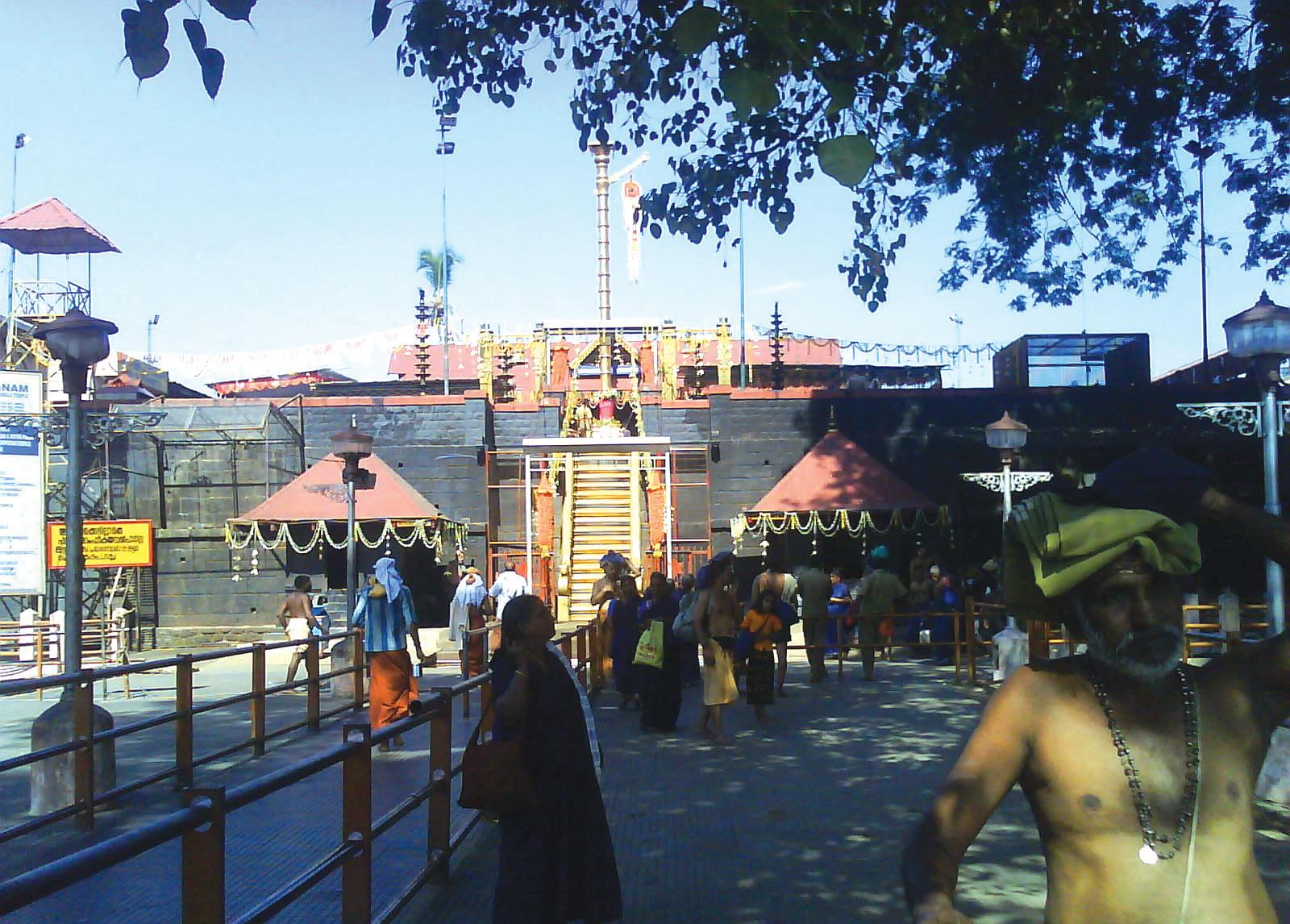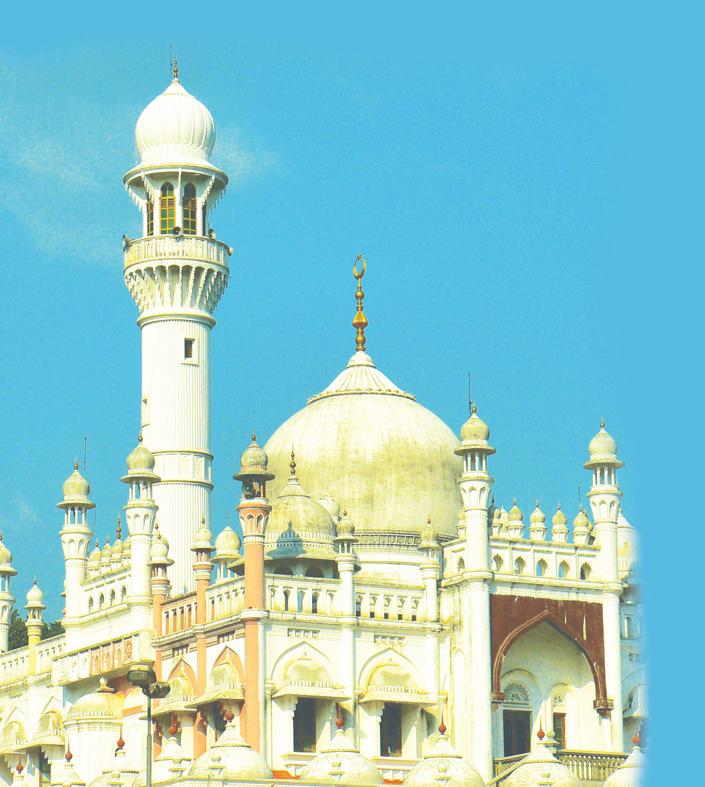
5 minute read
The abode on the hills
from 2009-12 Sydney (1)
by Indian Link
This time of the year, many Hindu Malayalees are currently on or are preparing to go pay a visit to the Lord’s shrine at Sabarimala. NIMA MENON remembers her first visit vividly

Iwas barely eleven, but even today more than three decades later, I can still remember the experiences like they happened yesterday - the initiation, the penance and finally the journey; the trek through the forest, barefooted and chanting the name of the Lord. I was on my way to Sabarimala, for a vision of the deity of Ayyappa, sitting atop the hill.
Come November, pilgrims clad in black/ blue/saffron are a common sight in not only all the southern Indian states, but other parts of the country as well. Devotees outside India travel to Kerala during this time. The pilgrimage to the hilltop shrine is no easy task and cannot be done in a day. The devotee/pilgrim has to undertake a strict penance (vrutham) of 41 days. Before beginning the multi-day walk through the hilly jungles to get to Sabarimala, the pilgrims prepare themselves with 41 days of rigorous fasting, celibacy, meditation and prayer. The pilgrim leads the life of a sanyasi, for after the initiation in the temple and donning the black clothes he is called ‘swami’ and considered equivalent to the Lord he is seeking. He has to thus maintain a calm and peaceful disposition It is believed that Lord Ayyappa is a celibate and so female devotees can only undertake this pilgrimage before puberty and after menopause.
Sabarimala, the abode of Lord Ayyappa, is situated in Pathanamthitta, about 57 km from Kottayam in Kerala; high up in the dense forests of the Sahyadri Mountains (Western Ghats). It is about 3000 feet above sea-level. It is believed to be one of the oldest existing temples in India. Historians and archaeologists who have done an indepth study of the temple, its construction pattern etc suggest that the temple is at least 4000 years old. But popular belief is that the temple is nearly 5000 years old.
There are many myths and stories surrounding the deity and the temple. The most popular one tells about Lord Ayyappa being the son of Lord Vishnu (in the guise of Mohini) and Lord Shiva. King Rajashekara, a descendant of the Pandya dynasty, the ruler of Pandalam, was a just and courageous ruler, but was unhappy as he did not have an heir to the throne. According to the story he found a baby on the banks of river Pampa while returning from one of his hunting expeditions. The baby had a gold bell around his neck and was hence named ‘ blessed with a son of his own. The scheming diwan poisons the queen’s mind and the young Manikandan was sent to the jungle to bring a tigress’ milk to cure the queen of an alien ailment. He was barely thirteen. Meanwhile, Mahishi, the sister of the asura king Mahishasura, killed by Lord Vishnu (in the guise of Mohini) was creating havoc. Manikandan fought Mahishi and vanquished her. A sage who visited the kingdom, revealed to the king the true identity of the boy he found in the jungle. On his return to the kingdom astride a tigress, Manikandan informed the king that it was time for him to leave his earthly abode. The king expressed his desire to build a temple in his memory and asked the lord to suggest a suitable spot. The Lord shot an arrow that fell at Sabari, the place named after Lord Rama’s devotee. That is how the temple came to be built at Sabarimala.
The most unique feature of this hill is the existence of the mosque of Vavarswami. All pilgrims have to first pay their respects to Vavarswami, the Muslim warrior, an ardent devotee of the Lord. While there are several accounts of the identity of Vavar, it is generally believed that he was a warrior who was defeated and subdued by Lord Ayyappa and later became a close associate. It is believed that the Lord himself instructed the king to build a mosque for Vavar at Erumeli. Here, the religious rituals are conducted by a Muslim priest. There is no distinguishable idol, but a carved stone slab that represents the deity. A green silken cloth is hung across one wall, and there is also an old sword which is believed to symbolise Vavar’s eminence as a great warrior. The special
The Sabarimala shrine is only open a few times each year, the Mandalam festival covering 41 days from November 15 to December 26 and the Makaravilakku from January 1-14 being the most prominent. Hence the pilgrimage begins in the month of November and ends in January. Though one of the most remote shrines in southern India, it still draws three to four million pilgrims each year. Pilgrims on the way to Sabarimala take a holy dip in the Pampa River which has its own significance in the whole journey. Pampa is the most holy spot on the way to the sanctum sanctorum or Sannidhanam. It is here that Lord Ayyappa was found by King Rajashekara. The river Pampa is as holy as the Ganges. The water purifies one of all curses and all evil. Pilgrims set out in groups under a leader, ‘guru swami’ and each carry a cloth bundle called Irumudi Kettu containing traditional offerings. The Irumudi Kettu had a certain rationale and tradition in olden times. Since the trek to the Sannidhanam is a long one, the devotees have to spend the night in the jungle. The Irumudi has 2 compartments. While the front one marked ‘Om’ contains the offerings, the rear one contains sustenance materials such as rice, dhal, etc. The pilgrims also carry utensils attached to the rear portion of the Irumudi. For overnight halts light bedding is carried on the head and is used as a soft cushion on which the Irumudi rested comfortably. The main offerings carried are coconuts filled with ghee.

The devotees begin the pilgrimage chanting, Swamiye Saranam Ayyappa and this chant takes them through as they make their way to the top braving the rough and tough terrain, barefooted. Petta Thullal is an integral part of the pilgrimage. It traditionally starts at Erumeli and the devotees, with their faces painted, dance exuberantly to the chant of “Swami Thinthaka Thom, Ayyappa Thinthaka Thom”. After paying their respects to Vavarswami they make their way to the main shrine. Eighteen steps lead up to the temple. These are believed to represent the eighteen steps that can lift a human being to the level of a saint. Only those with the
On the long and arduous trek up the mountain, devotees carry cloth bundles containing traditional offerings
The mosque of Vavarswami

Irumudi Kettu are allowed to climb these steps. Devotees break the coconuts filled with ghee while climbing the steps. It is believed that this will remove all obstacles on their way. Reaching the Pathinettam padi (eighteenth step) and the Lord’s darshan is the highlight of the pilgrimage.
The most anticipated event at Sabarimala is the Makara Jyothi which is usually on the 14th of January. The Thiruvabharanam or the sacred jewels of the Lord, still a private property of the Pandalam royal family arrives from Pandalam amidst the chanting of “Swamiye Saranam Ayyappa”. Each and every year a Garuda flies over the boxes carrying the jewels as if to guard them. The appearance of the bird coinciding with the arrival of the jewels is such a strange phenomenon. As the priest adorns the idol of the Lord with these jewels and performs the arathi, a brilliant light appears in the mountain opposite to the temple. This light called the ‘Makara Jyothi’ appears thrice and there is divine euphoria amongst all the devotees as they fervently chant “Swamiye Saranam Ayyappa”. I have seen this Jyothi (light) myself and the experience is so exclusive that it will last a lifetime. Devotees go back to the shrine year after year to see this Jyothi. This sighting marks the culmination of the pilgrimage.
Lord Ayyappa is the symbol of religious unity and communal harmony. The shrine is open to any devotee who is ready to undergo the penance. The feeling of spiritual elevation is so remarkable, the magnetic charm so intense that it seems to draw the devotee, who has undertaken this pilgrimage once, to the shrine time and time again in quest of spiritual solace. No words can describe the inner calm and peace one experiences. There is a feeling of








